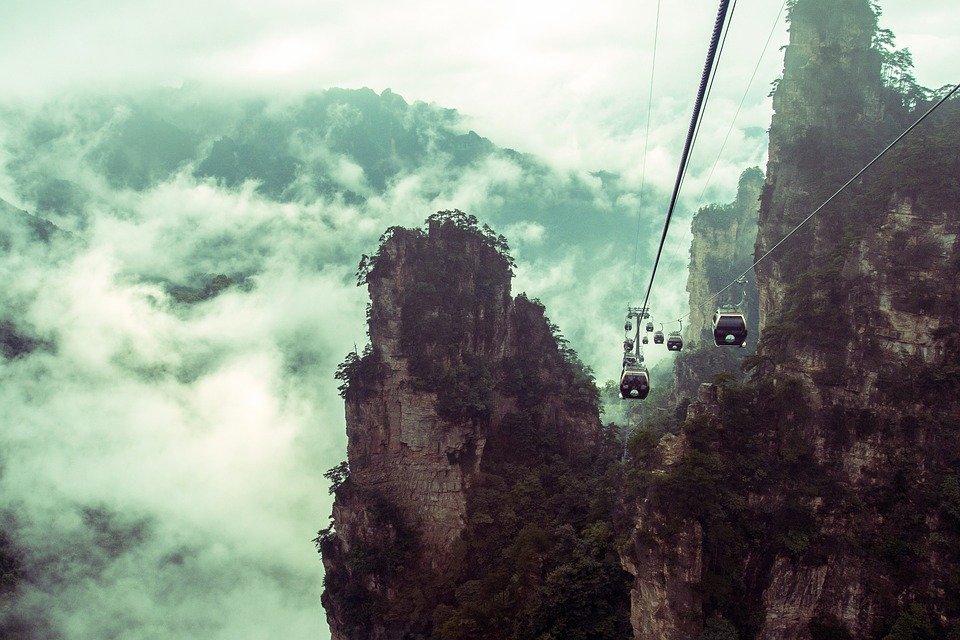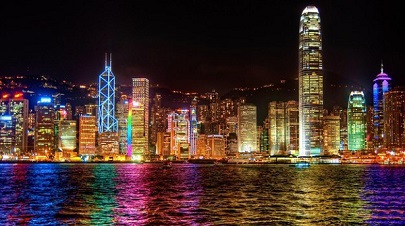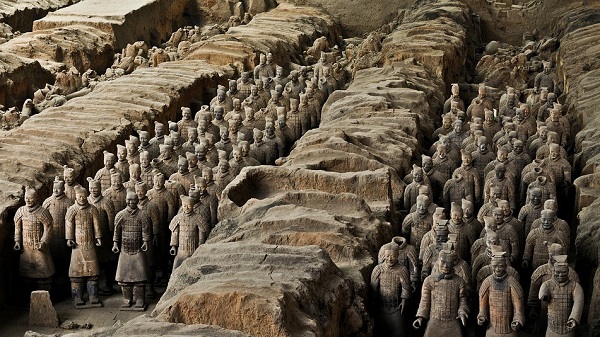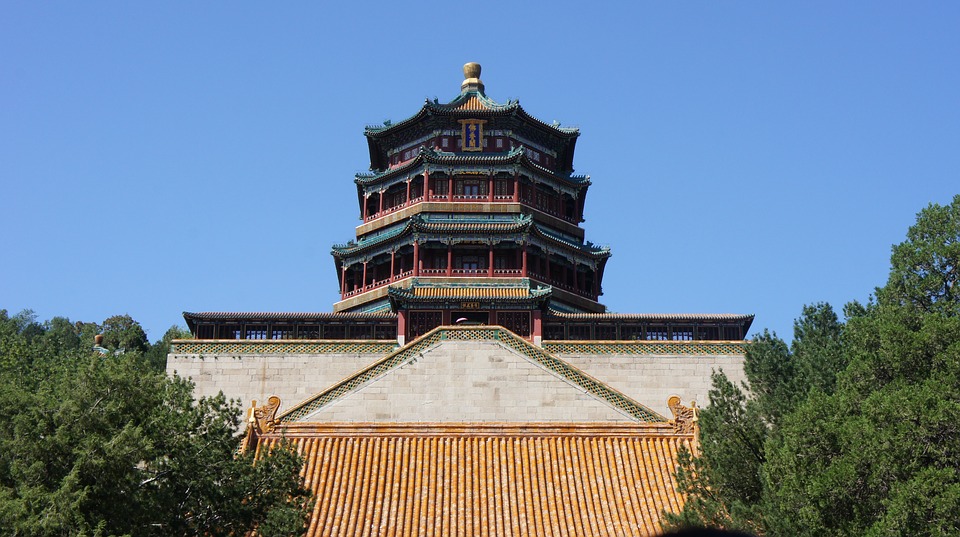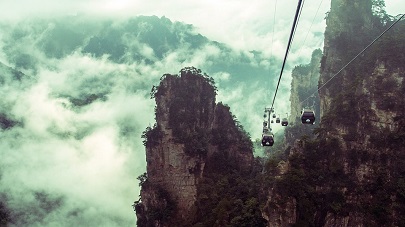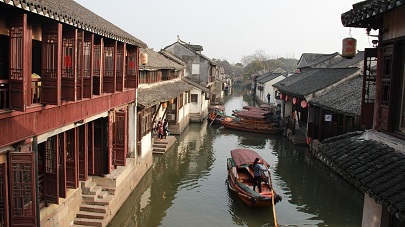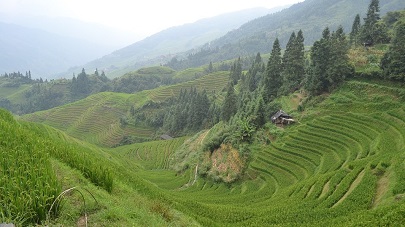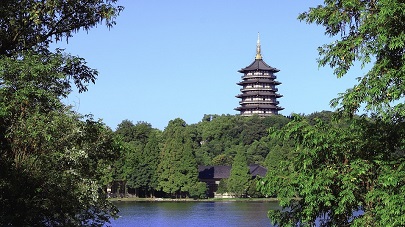19 Jan
2018
Top 10 China Travel Destinations for Holidays
Transportation & Travel By China Car Service Comments Off on Top 10 China Travel Destinations for Holidays
What do you enjoy doing most when you’re traveling? Perhaps it’s hiking through green mountain landscapes, enjoying the view from the world’s tallest skyscrapers, or exploring cities with thousands of years of history. Maybe you’re not really interested in any of those, but you love seeing cute animals. Who doesn’t love Pandas? Whatever you’d like to do, China has it all! Below we’ve created a guide of China’s ten most popular travel destinations and added information on how best to get there.
1. Great Wall Of China
- Travel Destination: Beijing
- Why visit: To experience one of the wonders of the world.
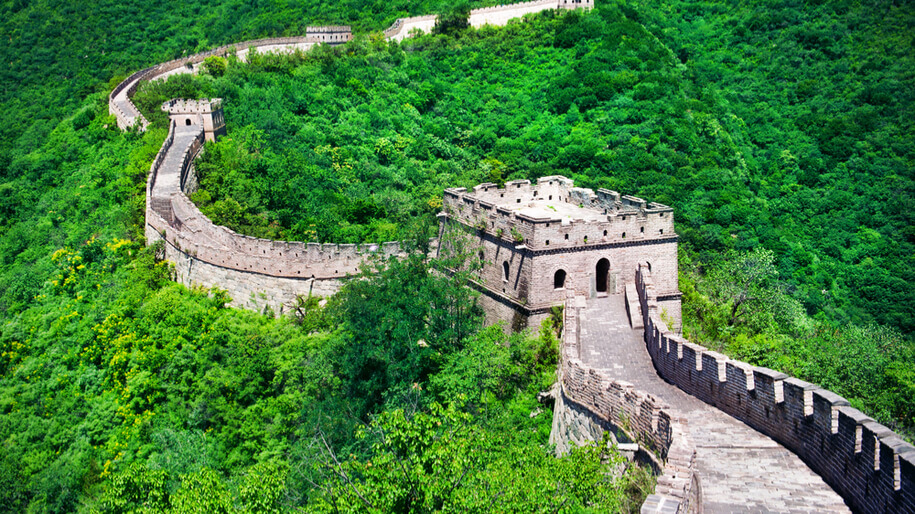
No list of places to visit in China would be complete without including The Great Wall of China in Beijing. Although the wall extends throughout most of Northern China, the sections with best access are in Beijing. Travelers are advised to research the different sections of the wall before deciding which part they’d like to visit. Below is a guide with the most popular sections of the wall:
- Jinshanling – Though only half restored, Jinshanling is the perfect spot for tourists who prefer a more adventurous walk. Popular with hikers, this section of the wall is for more experienced walkers. Distance From Beijing Center: 2 hours 30 minutes.
- Badaling – Arguably the most famous section of the wall, Badaling is very popular with Chinese tourists. Admittedly, this section of the wall can become overcrowded at times. However, it also happens to be the easiest section to access; and the most convenient for visitors with limited time. Distance From Beijing Center: 1 hour 40 minutes.
- Mutianyu – For visitors wishing to avoid the crowds, Mutianyu is known as the most beautiful section of the wall. It’s further than Badaling. Nonetheless, for those additional 20 minutes of travel time, tourists are guaranteed a vastly superior experience. Distance Beijing Center: 2 hours.
Getting There: There are countless options for tour groups being sold in the city. Most of these tours involve multiple stops-offs at tourist shops and museums. These are where the tour guides make their commissions. After a long day of walking on the wall, the last thing you want is a “sales tour.” Treat yourself, consider booking a private car so you can relax on your return to the city.
2. Victoria Harbour
- Travel Destination: Hong Kong
- Why visit: To view the world’s most stunning skyline.
Hong Kong is often voted as having the most stunning skyline in the world. When it comes to enjoying that view, there is one place that stands out from the rest. The Peak, a viewing platform overlooking the Victoria Harbour in Hong Kong. From here, tourists can see out over Hong Kong Island, across the harbor to Kowloon, and beyond into the New Territories.
Hong Kong is often voted as having the most stunning skyline in the world. When it comes to enjoying that view, there is one place that stands out from the rest. The Peak, a viewing platform overlooking the Victoria Harbour in Hong Kong. From here, tourists can see out over Hong Kong Island, across the harbor to Kowloon, and beyond into the New Territories.
- Adults – HKD 50 (US$ 6.50)
- Children – HKD 25 (US$ 3.50)
- Seniors (65 and above) – HKD 25 (US$ 3.50)
Getting There: The most popular way to reach The Peak is via the tram service, located in the Central district. While the tram has become an iconic part of the attraction, it’s usually overcrowded. Long queues form a part of the ride.
If you wish to avoid the queues, you could book a private car to take you directly up to The Peak. Once there, you can soak up the stunning views of Victoria Harbour.
3. Terracotta Army
- Travel Destination: Xi’an
- Why visit: The most important archaeological discovery of the 20th Century
Since their discovery by Xi’an local farmers in 1974, the Terracotta Army has fascinated architects and attracted tourists from around the world. The warriors form part of the funerary project of the first Emperor, Qin Shi Huang. They’re over 2,200 years old! Recognized by UNESCO as a World Heritage Site, the Terracotta Army is truly an unmissable attraction. For those planning to spend their holiday in China, it’s a must-see.
The excavation site is officially named the Emperor Qin Shi Huang’s Mausoleum Site Museum. Admission costs RMB150 (US$ 22) from March to November and RMB120 (US$ 17.50) between December and February.
Getting There: The Terracotta Army is a 45 minutes drive from Xi’an city center. While the army can be reached by the 306 bus leaving from Xi’an Railway Station, the drivers don’t speak English. Tourists are heavily advised to be vigilant against fake tourist buses. The easiest way to travel is by hiring a private car with an English speaking tour guide.
4. The Bund
- Travel Destination: Shanghai
- Why visit: A historic walk by the Huangpu River
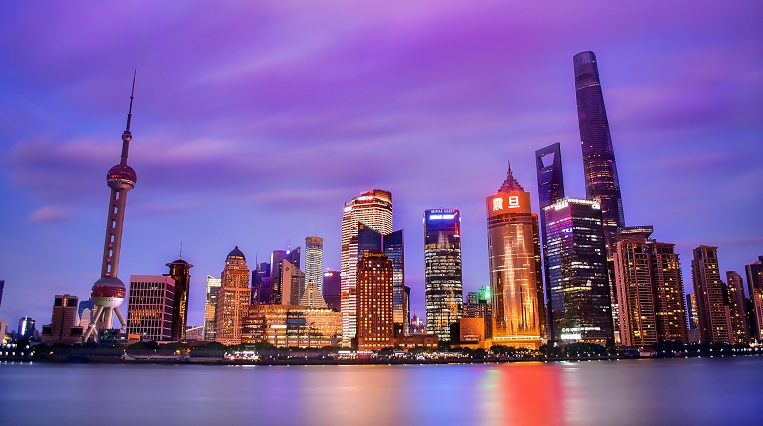
Tall skyscrapers shoot up on one side of the Huangpu’s River. On the other side, the historic buildings of The Bund remain as iconic symbols of Shanghai’s rich history and culture. A strict height restriction has preserved the architecture of the past hundred years. With buildings showcasing the likes of the Renaissance of the Peace Hotel and the Neo-Classicism of the Customs House.
While exploring The Bund in Shanghai, visitors may wish to enjoy a riverside meal at one of the many fine dining restaurants and luxury bars:
- Wei Jing Ge –The luxurious Waldorf Astoria hotel is home to Wei Jing Ge restaurant, where fine dining is mixed with Cantonese and Shanghainese cuisine.
- Jean Georges –Treat yourself to the finest French cuisine at Jean-Georges Vongerichten’s Michelin star restaurant.
- The Jazz Bar – Some of the world’s most famous and most powerful people have spent an evening at the legendary Jazz Bar in the Peace Hotel. Stop in for a night cap and catch one of the city’s best house bands.
Getting There: Although The Bund is located at the heart of the city, visitors unfamiliar to the area may still wish to hire an English speaking tour guide to explain the history behind the buildings.
5. Summer Palace
- Travel Destination: Beijing
- Why visit: A scenic day out at exploring the imperial gardens.
While tourists crowd the Forbidden City in the center of Beijing, farther out of the city there is the more peaceful Summer Palace. The 290 acre imperial garden is the largest of its kind in China. Mainly consisting of the tranquil Kunming Lake, overlooked by Longevity Hill.
Tower Of Buddhist Incense – From atop Longevity Hill, the Tower of Buddhist Incense is the highest point in the Summer Palace. It offers breathtaking views of the Kunming Lake.
- Marble Boat – Out on Kunming Lake, visitors will find The Marble Boat, a 36 meter long stone boat built on the water. The attraction is, in fact, a replica of the original wooden boat that burned down during the Second Opium War. The attraction is steeped in intriguing history.
- 17 Arch Bridge –The 17 Arch Bridge is the only way to cross Kunming Lake to Nanhu Island. The 150 meter bridge is also one of the most popular tourist attractions in the Summer Palace.
The park is open from 06:30 to 20:30; the entry is RMB50 (US$ 7.50) during peak season and RMB40 (US$ 6) during the low season.
Getting There: The Summer Palace can be reached via subway by taking either Line 4, and getting off at Beigongmen; or by taking Line 16, and getting off at Xiyuan. While it’s convenient and has English signs, the Beijing subway is very overcrowded at certain points of the day. The bus isn’t as well signposted in English and also suffers from overcrowding. To avoid a stressful transport experience, you can book a private car and arrive at the Summer Palace comfortably.
6. Chengdu Panda Center
- Travel Destination: Chengdu
- Why visit: Seeing China’s most beloved animal.
Although giant pandas can be found in zoos across China, nothing quite compares to witnessing their natural habitat in Chengdu. There are only 2,000 pandas in the world, 70% of which are in the Chengdu area. There are two main places located near the city where visitors can see these national treasures:
- Wolong National Natural Reserve – The Wolong National Natural Reserve covers about 200,000 hectares. It’s home to over 4,000 different species, including more than 150 giant pandas. The endangered animal is free to roam around the grounds. Visitors have many opportunities to see the pandas as they explore the reserve. Visitors may also take pictures with the baby pandas and even ‘adopt’ and name a panda at the cost of a donation (Distance From Chengdu Center: 135km).
- Chengdu Research Base of Giant Panda Breeding – Just 15 kilometers outside of the city center, the research base is perhaps the most famous of the three locations. The research center has been designed to recreate the panda’s natural habitat. Visitors are able to walk around to see the pandas as they eat, play, and sleep. It’s highly recommended you visit the center early in the morning, once the pandas eat they usually sleep for the rest of the day. (Distance From Chengdu Center: 15km).
Getting There: Both locations are situated outside of the city center. Tour coaches run to both places, with plenty of tourist traps along the way. If you’d like a more direct ride there, we recommend booking a private car in advance, with an English speaking tour guide for when you arrive.
A private transfer is the safest, quickest way to get to one of these wonderful destinations. China Car Service is a trusted transportation service helping foreign business travelers for almost two decades. We provide door-to-door service at competitive prices.Make your journey stress-free and contact our 24/7 team at Bookings@ChinaCarService.com with questions, or get a quote below. Use this promo code: 10CARBLOG to get a $10 discount on your 1st service. |
7. Zhangjiajie National Forest Park
- Travel Destination: Zhangjiajie
- Why visit: Breathtaking scenery that inspired the movie Avatar.
With the release of the box office smash hit “Avatar” in 2009, Zhangjiajie National Forest Park experienced a massive surge in tourism. Fans of the movie flocked to the mountain forests to see some of the stunning backdrops from which the movie was based on.
This UNESCO World Heritage site is truly one of the most unique natural environments in the world. Depending on what time of the year you visit, you can expect quite different experiences, so it’s important to time your trip carefully:
- March to June – The rains associated with the springtime can make some of the routes somewhat treacherous. However, this is also the time when the mountains will be covered in fog, which gives them an otherworldly and beautiful appearance.
- July to August – Unsurprisingly, the hottest period to explore the National Forest Park is during the summer holidays, but visitors will find some respite from the heat under the shade of the forest and altitude of the mountains.
- September to October – Arguably the ideal time to visit Zhangjiajie is between September and October, when the weather is neither too humid nor too chilly, allowing for a comfortable tour of the forest park.
- November to February – During the winter months, access to some areas of the Zhangjiajie National Forest Park will be restricted due to the adverse weather conditions. The park also closes for annual maintenance in February for one week. Those visitors who are willing to brave the conditions, however, may be rewarded with an opportunity to see the park at its most beautiful with the snowy mountain scenery.
Entrance fee to enter the park is RMB248 (US$ 36), with the ticket being valid for three days. A week-long ticket is available at RMB298 (US$ 43.50).
Getting There: Zhangjiajie National Forest Park is naturally in a remote area and is not conveniently accessed by public transport. Visitors will arrive at the Zhangjiajie Railway Station and from there it’s a 50-minute car ride to Wulingyuan town, next to the forest park. As Zhangjiajie is very much a tourist city, it’s suggested to avoid suspicious local taxis and advertised tour coaches. Instead, book a private car service in advance with your own English speaking tour guide.
8. Zhouzhuang
- Travel Destination: Suzhou
- Why visit: Explore old China in the ‘Venice of the East.’
As new skyscrapers shoot up and metropolises continue to sprawl, some tourists long to see how China used to be. There are a number of water towns that have remained intact, but none are as beautiful as Zhouzhuang, the Venice of the East.
Located 30 km southeast of Suzhou, the water town is renowned for its narrow canals and stone bridges. Tourists are recommended to visit the iconic twin bridges of Shuang Qiao; the immaculately preserved Shen House; and make sure to try the Wansan Pork dish, named after one of Suzhou’s most famous sons, Shen Wansan.
Entrance to the water town costs RMB100 (US$ 14.50). There is also an organized boat ride down the famous canal, which costs RMB40 (US$ 6.00) per head or RMB100 for a boat that can hold up to six people.
Getting There: With Suzhou being 30km away and Shanghai 60km, Zhouzhuang is easily accessed by car. It’s straightforward and convenient to arrange a private car to pick you up from either Suzhou or Shanghai and take you directly to Zhouzhuang.
9. Longsheng Rice Terraces
- Travel Destination: Guilin
- Why visit: The most beautiful rice terraces in China.
China is blessed with a number of beautiful rice terraces. Perhaps the most stunning of these are the Longsheng Rice Terraces, located just 60km away from Guilin, in Guangxi province. The terraced rice fields start at the riverside and wind up the mountain to nearly 800 meters high, This gives them a coiled appearance that inspired their nickname, the ‘Dragon’s Backbone’. The Longsheng Rice Terraces can be categorized into three areas:
- Jinkeng Red Yao – The most popular area for tourists and photographers, thanks to the West Hill Music viewing point, which offers the highest view of the Longsheng Rice Terraces.
- Ping’an Zhuang – Ping’an Zhuang is the most developed area of the Longsheng Rice Terraces. After a day of hiking and photography, tourists can wind down at any of the many restaurants, cafes, bars and hotels.
- Longji Old Village – A contrast to the popular Jinkeng Red Yao and the developed Ping’an Zhuang rice terraces, Longji Old Village offers visitors a look at the quainter side of the Longsheng Rice Terraces. This historical village is comprised of old stilt-style buildings, the oldest of which dates back more than 150 years, to the Qing Dynasty.
Getting There: The Longsheng Rice Terraces can be difficult to reach via public transport. By far the most convenient way to travel is by booking a private car, with the option of an English speaking tour guide to show you around the rice terraces.
10. West Lake
- Travel Destination: Hangzhou
- Why visit: Relax while exploring one of China’s most iconic lakes.
When people think of Hangzhou, the tranquil West Lake often comes to mind. One of the most peaceful travel destinations in China. The picturesque setting has been inspiring poets and painters for centuries and was recently made a UNESCO World Heritage Site. The West Lake is full of points of interest with stunning views, but visitors are advised to prioritize the following spots:
- Three Pools Mirroring The Moon – Of all the sights in West Lake, this is arguably the most iconic. During a full moon, a fire is lit inside of three small pagodas that rest on the calm lake. These cast a unique reflection on the water, which inspired the name.
- Su Causeway – Enjoyed best during the spring, the Su Causeway comes to life when the weeping willows and peach blossoms are in full bloom.
- Lotus In The Breeze At Crooked Courtyard – To truly enjoy the lotus-filled courtyard, tourists are advised to visit during the summer months. During the summer, there are hundreds of different lotus plants blooming on the western shore of the lake.
Getting There: Via subway. Visitors can take Line 1 to Longxiangqiao station and from there walk West until they reach the Lakeside Park. For those unfamiliar with Hangzhou or on a tight schedule, it may be more convenient to get to Hangzhou from Shanghai by private car.
Travel Tip:
There are plenty of wonderful options for your next journey to China. Whichever you choose, consider making the trip easier by booking a private car with an English speaking tour guide. Tour coaches herd tourists and stick to an inflexible schedule. Public transport limits the times when visitors can come and go. A private car service, on the other hand, gives you all the freedom to do the activities you wish on your own schedule.
In addition, many of the translations at some of these attractions are far from perfect. Similarly, the speaking level of local tour guides varies wildly. By booking an English speaking tour guide in advance, they can explain the history and culture while answering any follow-up questions you may have. They can help you avoid any scams and tourist traps. In fact, most con artists won’t even bother trying with travelers who are accompanied by an English speaking tour guide. Treat yourself to the best, because you deserve the best.




